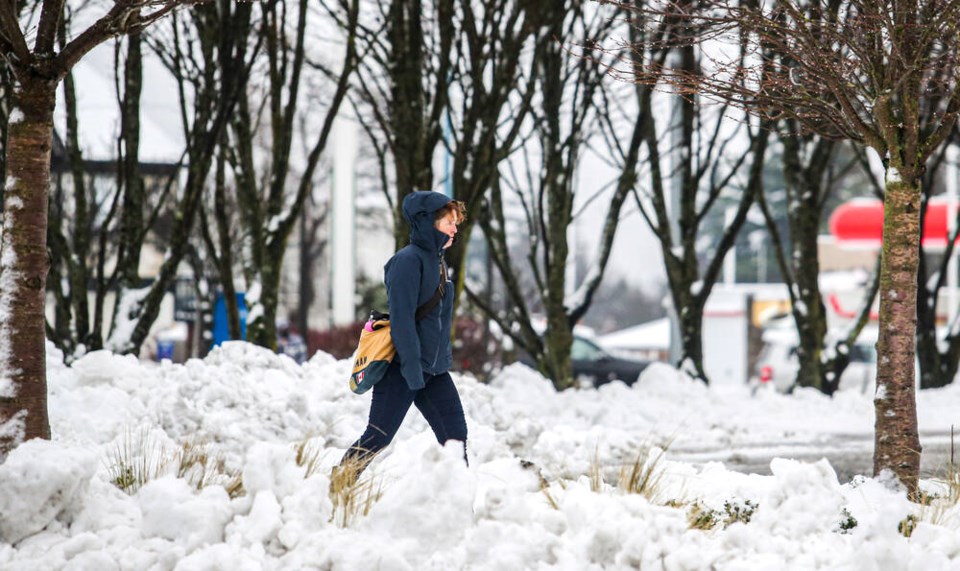Disturbing images and news of pedestrians being struck, maimed and killed by drivers invariably lead the public to demand safer crosswalks and sidewalks. Local residents will be watching to see if municipalities have budgeted for short-term improvements including lower (and enforced) speed limits, improved crosswalks and better sidewalk lighting.
But medium-term measures are also needed. Wider sidewalks, traffic calming, pedestrian-friendly street design and an overhaul of municipal bylaws all need to be planned for now, not five or 10 years in the future.
Such improvements should be included in the first budgets approved by newly elected councils. As municipal elections ramp up, local voters will evaluate candidates’ positions and many will cast their ballots for those who champion pedestrian safety.
In the Capital Regional District, regional co-ordination is also needed is improve pedestrian safety. The provincial traffic code is in need of revision, with pedestrian safety being central, not an afterthought. Both the provincial and federal governments have roles to play by making pedestrian safety a transportation infrastructure priority.
But it is the intersection of pedestrian safety, active transportation and climate change that calls on all levels of government for policies, planning, funding and, most importantly, action — short-term, medium-term and especially long-term.
Weeks ago, regional residents decried the pace (even lack) of snow removal from streets and sidewalks. Clearing major roads for ambulances, fire crews and police must be the top priority. But what should come next?
Sidewalks and crosswalks. Individuals, businesses, municipalities, other levels of government as well as public institutions should all take responsibility for clearing sidewalks and crossing points — and invest in the equipment and personnel needed to do so.
The heavy snowfalls were sandwiched between high winds and heavy rains that brought down trees, undermined walkways and caused muddy runoff and large pools of standing water at corners, often making sidewalks and crossing points impassible.
Clearing sidewalks and storm drain grates of debris needs to be a priority — and included in municipal budgets and staffing plans going forward.
Last summer’s heat dome highlighted to the need to plant more shade trees. A long-term study released by Statistics Canada in 2021 highlights the loss of “greenness” in Canada’s urban centres and the pressing need to plant more trees and other green vegetation.
Pedestrians will embrace cleaner air and lower temperatures in the “urban heat islands.” But trees and plantings require boulevards, wider sidewalks and plans for pruning and autumn leaf clean-up.
Increasing setbacks for new construction, especially multi-storey buildings, and mandating both tree planning and wider sidewalks will benefit people living and working in these buildings as well as all pedestrians who use the adjacent spaces.
In 2012, Victoria began planning for 10,000 new people living in its urban core by 2041. Saanich plans to build a pedestrian-friendly residential and transportation hub near Uptown. Colwood envisions a whole new community at Royal Bay; design sketches feature wide, tree-lined sidewalks and bike lanes.
The CRD wants to have walking, biking or taking the bus make up 42 per cent of all trips by 2038. Most of the region’s municipalities have active transportation committees and plans.
The challenges of climate change help drive these plans. Safe sidewalks and crosswalks are core elements of density, sustainability and active transportation.
Everyone deserves safe sidewalks and crosswalks: Parents pushing strollers, children, students, seniors, people who need mobility devices, people walking their dogs, everyone getting on or off a bus, most cyclists (after dismounting, of course) and anyone without a car (and many people with one).
We all need to go to school, work, grocery stores and pharmacies. We want safe ways to access local businesses, libraries and services. We want to reap the proven health benefits associated with walking — and feeling safe when we do.
It is time for local residents and candidates for municipal office to express strong support for short, medium and long-term planning and investments in the region’s sidewalks, crosswalks and other elements of a pedestrian-friendly environment.
Such measures come with a price tag, but these are costs we can put off no longer.



